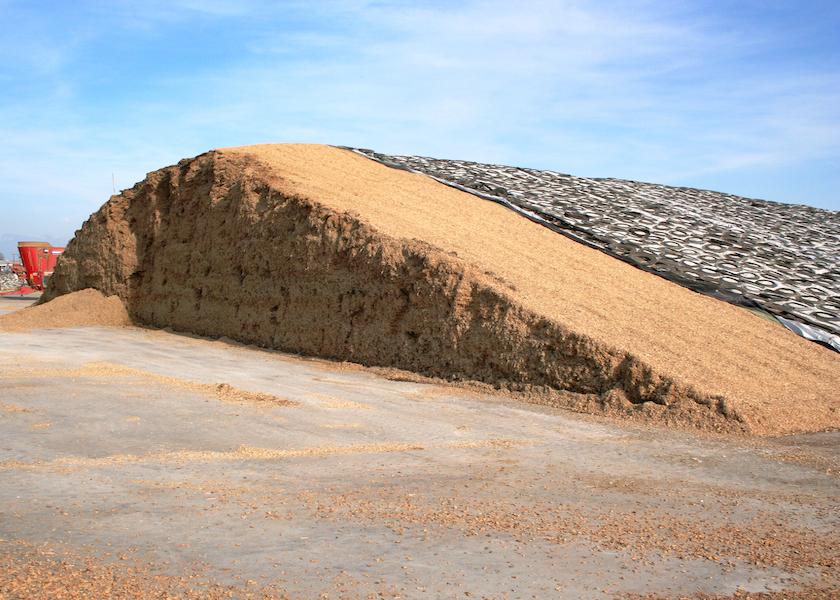Take a Buddy with You to the Bunker

Feed-out of new-crop corn silage has begun on most dairies, and it appears this crop may be more prone than normal to silage collapses.
Jordan Hunt, PAS, a northeast Iowa-based consultant with GPS Dairy Consulting, LLC, noted in a recent blog post that producers are reporting regular avalanches of a day’s worth or more of feed from the feed-out faces of silage bunkers and piles.
Hunt cautioned producers and their crews to be mindful of the safety hazards that silage can create. “Use a buddy system when working near the pile and managing the plastic,” he advised. “In the event something happens, one person can call for help.”
He also advised defacing silage so the top of the face is pitched back 2-3 feet from the base. “Undercutting” silage piles can lead to hanging shelves at heights as high as 30 feet, which Hunt reminded are up to 65% moisture, and thus very heavy and prone to collapsing.
Defacing a precise volume each day is also important. Hunt said if the amount for the day is short, avoid using a loader bucket on the face to grab a little more. “Either deface more, or if space allows, do a side-scrape with a wheel loader bucket,” he suggested.
If this year’s crop is showing instability, Hunt advised re-evaluating packing procedures next year, with a packing density goal of greater than 20#DM/cu. ft.
The late Keith Bolsen, silage expert and staunch advocate of silage safety from Kansas State University, promoted the rule-of-thumb to never stand closer to the silage face that three times its height. To safely collect samples, he advised staying away from the face and pulling samples instead from a loader bucket or sample pile that has been moved a safe distance away from the feed-out face.
Lallemand Animal Nutrition developed a comprehensive silage safety handbook authored by Bolsen, which addresses additional bunker and pile safety measures, along with safety education on silage harvest, equipment operation, and dangerous gases.
“I think we all understand the danger associated with this [silage collapses and avalanches],” stated Hunt. “But I do want to remind us all that it can happen in split second, and can be deadly.”
For more on silage, read:
- U.S. Harvest Analysis Reveals Variable Mycotoxin Risk, Alltech Reports
- Drones Hone in on Silage Inventories
- 6 Ways to Boost Performance and Lower Feed Costs
- Drive-over Piles Gaining Favor
- Build a Dream Feed Center
- Field Meals Don’t Have to Be Complex







